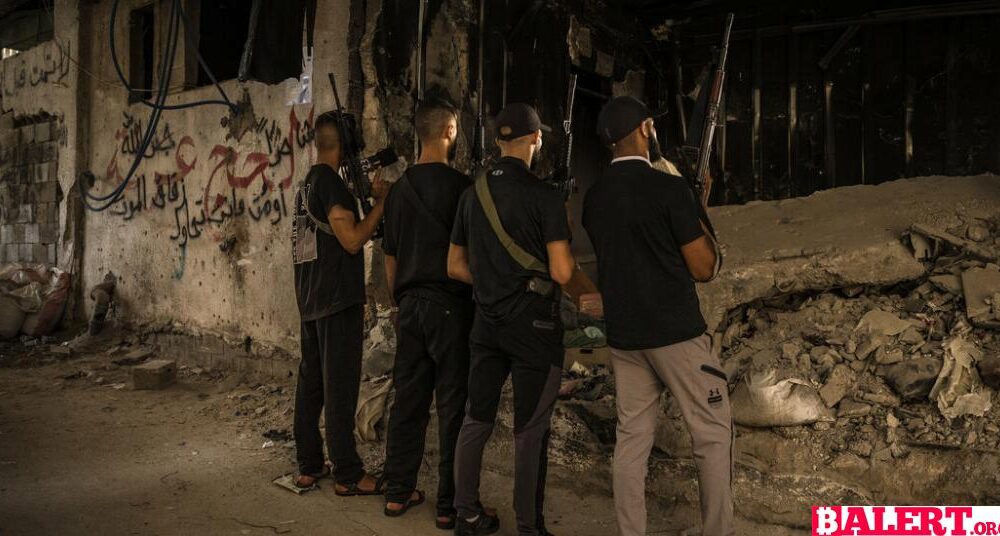World
The Transformation in Tulkarm Refugee Camp
Explore the profound changes and progress happening in Tulkarm Refugee Camp, witnessing the transformation and resilience of its inhabitants amidst challenging circumstances. Discover stories of hope, resilience, and community strength.

The alleys of Tulkarm Refugee Camp are shrouded in a permanent semidarkness, concealed by black nylon tarpaulins to shield the Palestinian fighters from Israeli drones surveilling from above. The buildings are adorned with green Hamas flags and banners honoring fallen “martyrs,” many of these structures bearing scars from Israeli raids and airstrikes intended to suppress the escalating militancy in the region, exacerbated by the conflict in Gaza.
Although Tulkarm is traditionally a stronghold of the moderate Fatah faction, a recent shift in allegiance has been observed among the local militants. I encountered Muhammad Jaber, a 25-year-old commander, in one of the dilapidated alleyways. He is among Israel’s most wanted individuals and, along with other fighters, has transitioned his loyalty from Fatah to more radical groups like Hamas and Palestinian Islamic Jihad following the Hamas-led offensive on Israel on October 7.
Reflecting on the lessons drawn from the Gaza war, Mr. Jaber emphasized the virtues of patience, strength, and courage as essential components of their resistance. Refugee camps in the northern West Bank, including Tulkarm, have historically been fervent centers of militancy, fueled by opposition to expanding Israeli settlements and the perceived failure of the peace process to secure a Palestinian state.
Post the events of October 7, Hamas rallied Palestinians to join the uprising against Israel, resonating particularly within these camps. Militants like Mr. Jaber aspire to drive the Israeli forces out of the West Bank, which has been under Israeli occupation since the 1967 war. For some, such as Hamas, the ultimate goal extends to liberating the entire region from Israeli presence.